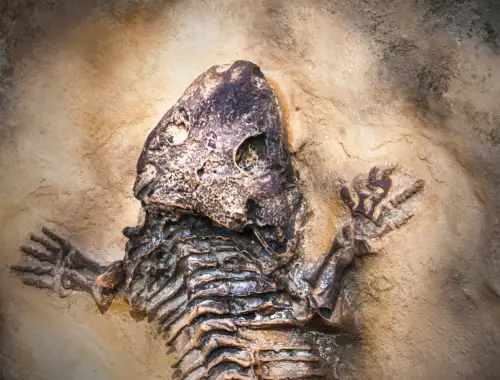The study of paleontology involves examining the fossil record to learn about the evolution and history of life on Earth. Reptiles and amphibians are no exception, and the fossil record provides important insights into the evolution and diversity of these animals. In this article, we will explore the paleontology of reptiles and amphibians.
Evolutionary History
Reptiles and amphibians have a long evolutionary history, dating back to the Carboniferous period over 300 million years ago. During this time, reptiles and amphibians shared a common ancestor and were part of a group of animals known as tetrapods (four-legged vertebrates).
Over time, reptiles and amphibians diverged into separate groups, with reptiles evolving a number of adaptations that allowed them to become more successful on land. These adaptations included the development of scales and the ability to lay eggs on land.
The fossil record provides important insights into the evolutionary history of reptiles and amphibians, including the appearance of important groups such as dinosaurs and crocodilians. Fossils also help to reveal how these animals adapted to different environments and how they interacted with other species.
Fossil Record of Reptiles
The fossil record of reptiles is rich and diverse, with many important groups represented. Some of the most well-known groups include dinosaurs, crocodilians, and turtles.
Dinosaurs were a group of reptiles that dominated the terrestrial environment for over 160 million years. Fossils of dinosaurs have been found all over the world, and they provide important insights into the diversity and evolution of these fascinating animals.
Crocodilians are another group of reptiles that have a long evolutionary history, dating back over 200 million years. Fossils of crocodilians have been found all over the world, and they provide important insights into the evolution and diversity of this group.
Turtles are a unique group of reptiles that have a hard, protective shell that covers their body. Fossils of turtles have been found dating back over 200 million years, and they provide important insights into the evolution and diversity of this fascinating group.
Fossil Record of Amphibians
The fossil record of amphibians is more limited than that of reptiles, due to their more delicate skeletons and the fact that many species live in aquatic environments. However, there are still many important fossils that have been discovered.
Some of the most well-known fossil amphibians include the early amphibian Ichthyostega, which lived over 300 million years ago and had limbs that were adapted for walking on land. Other important fossil amphibians include the giant salamander Andrias, which lived over 50 million years ago and was over six feet long.
Conclusion
In conclusion, the paleontology of reptiles and amphibians is a rich and diverse field of study. The fossil record provides important insights into the evolution and history of these fascinating animals, as well as their interactions with other species and their adaptations to different environments. By studying the paleontology of reptiles and amphibians, we can gain a better understanding of their evolution and diversity, and the importance of protecting and conserving these animals for future generations.











Leave a Reply